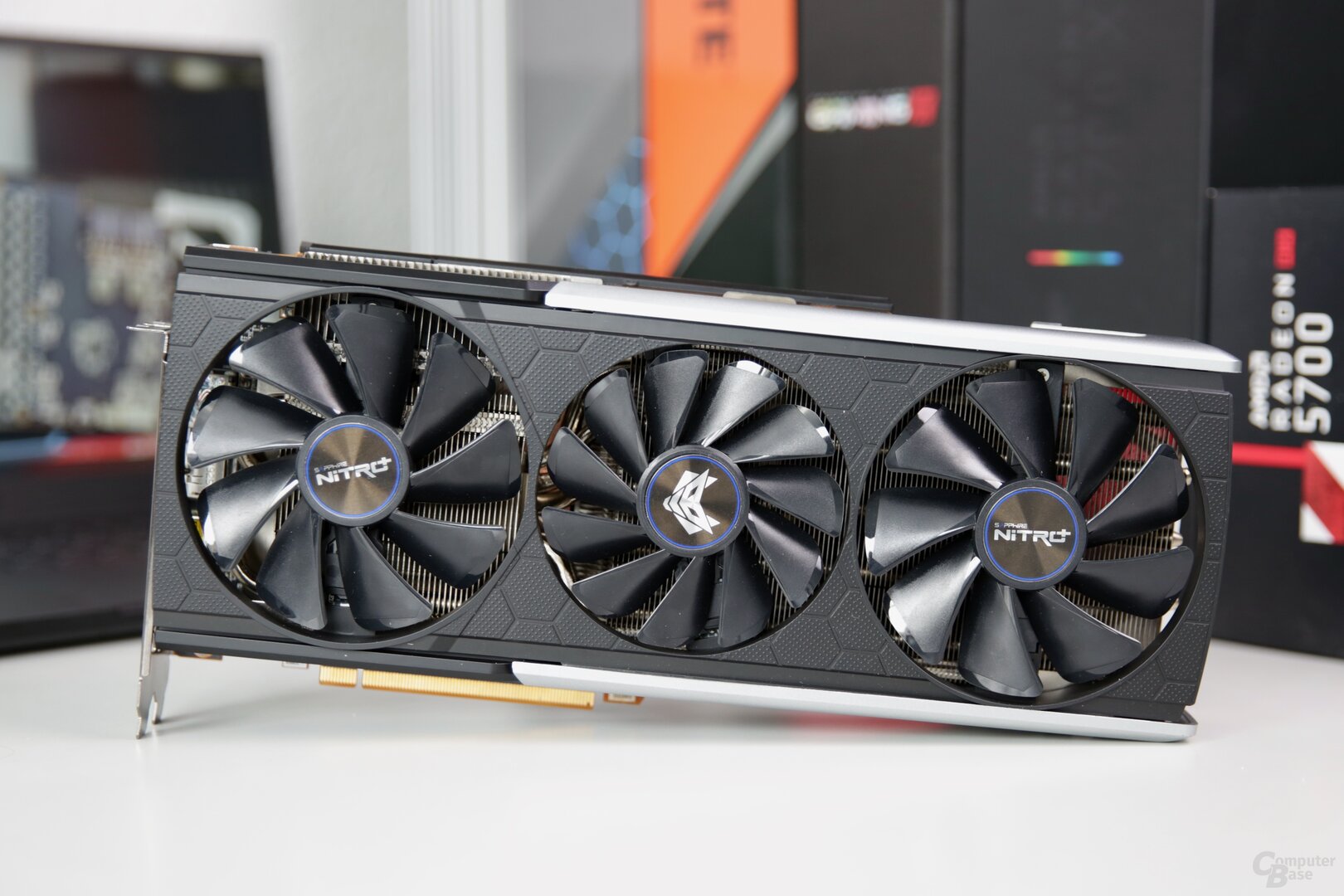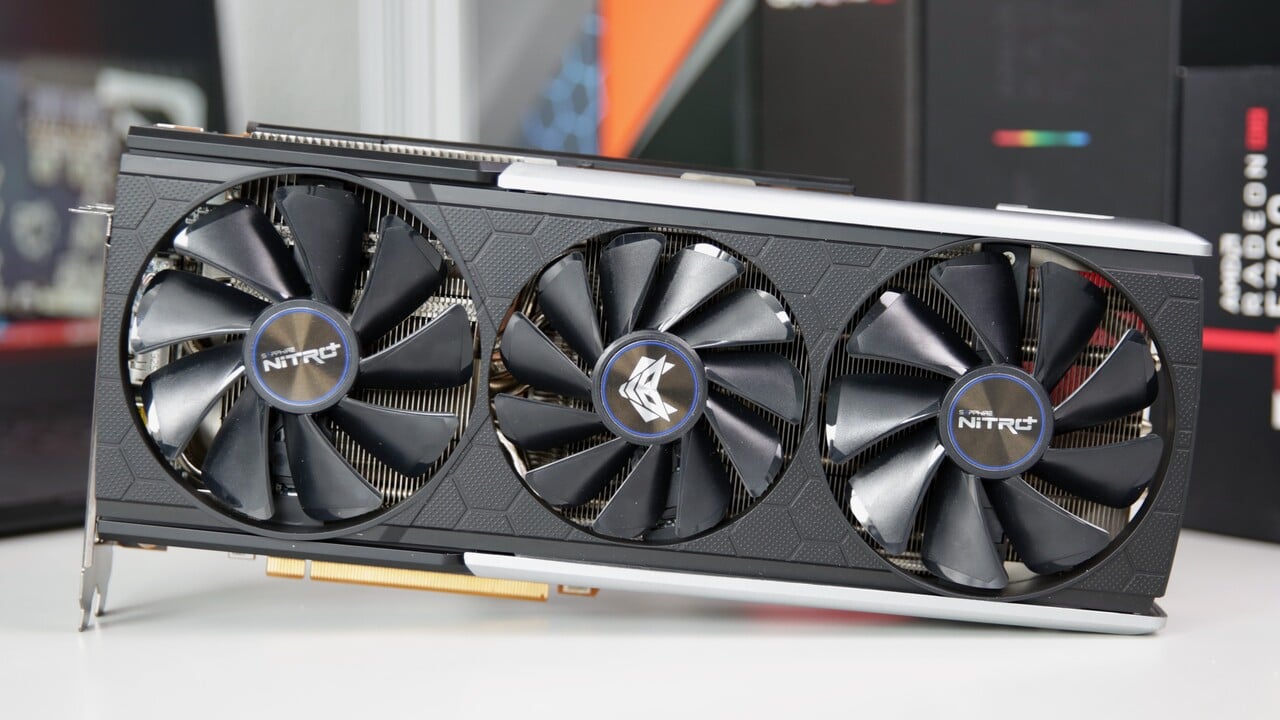Sapphire Radeon RX 5700 XT Nitro: Test |Hashrate | Specs | CPU Performance Sapphire Radeon RX 5700 Vs. Powercolor Red devil. The big duel is here: The Sapphire Radeon RX 5700 XT Nitro + competes against the PowerColor Radeon RX 5700 XT Red Devil. The Red Devil is the best Navi custom design so far, but at Vega Nitro + was the top dog. In the duel for the 7 nm crown, advantages for both graphics cards will be shown in autumn 2019.
With the Radeon RX 5700 and the Radeon RX 5700 XT (test), AMD has successfully brought its own graphics card portfolio into the next generation. RDNA works much better than the old GCN. However, one thing has remained the same: the loud reference cooler. And so there is a lot of interest in the custom designs.
Sapphire Nitro + vs. PowerColor Red Devil
Usually all manufacturers send the flagship models into the race before the cheaper versions are available. For example, Asus started with the Radeon RX 5700 XT Strix OC (test) and PowerColor with the Radeon RX 5700 XT Red Devil (test). Sapphire started with the Navi Custom models – like MSI – but the other way around: the budget solution Radeon RX 5700 XT Pulse (test) started, but there was no trace of a Radeon RX 5700 XT Nitro +.
Now Sapphire has finally let the flagship into the ring and is launching heavy guns again with the Radeon RX 5700 XT Nitro +: There is a large cooling system with three different-sized fans, new RGB lighting, three different BIOS variants and more much more. But is that enough to stand up to the powerful PowerColor Radeon RX 5700 XT Red Devil and thus become the best Navi custom card currently?
- From left to right: Asus Strix OC, MSI Gaming X, Sapphire Nitro + and PowerColor Red Devil
image 1 Of 3
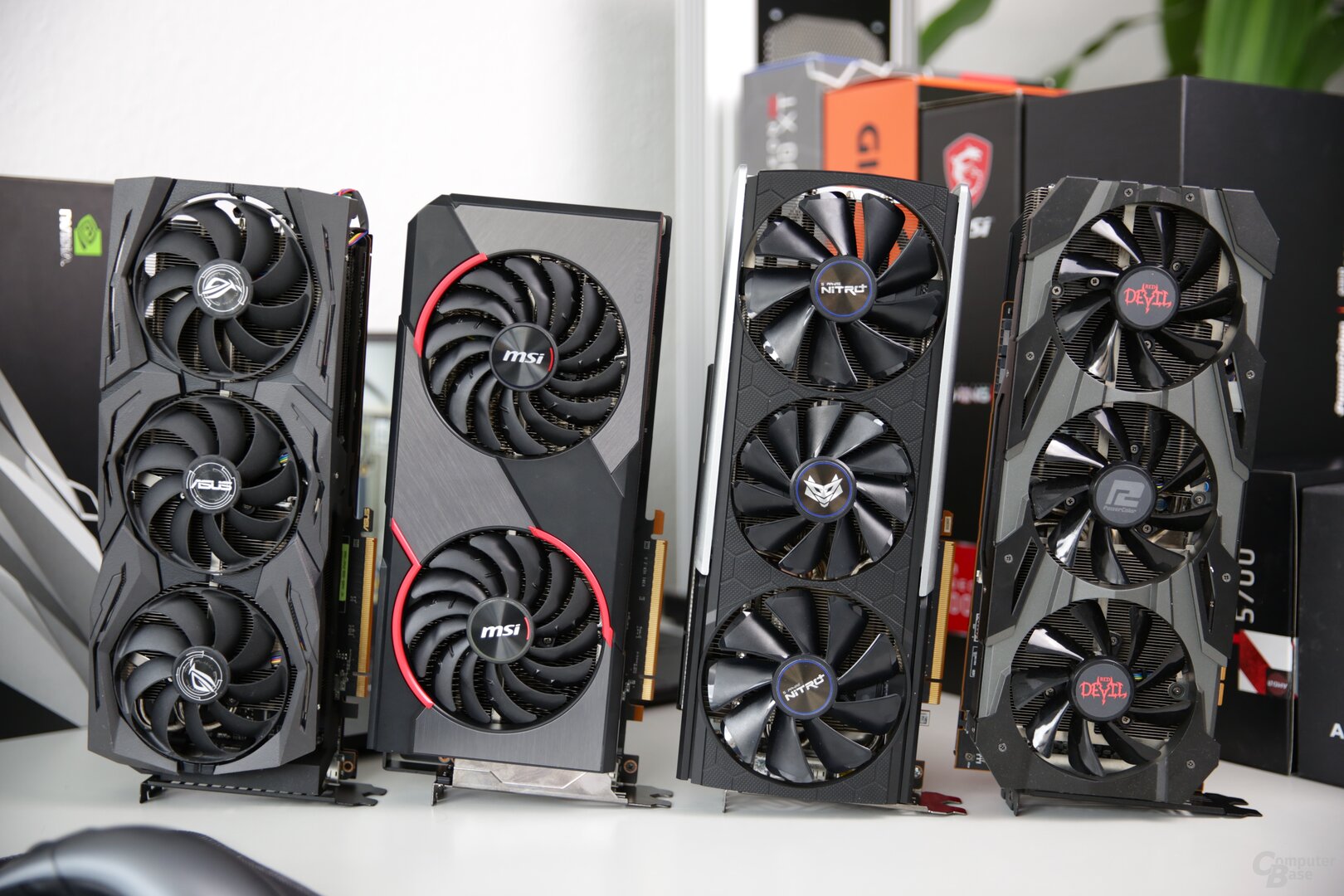
The Sapphire Radeon RX 5700 XT Nitro + in detail
The Radeon RX 5700 XT Nitro + is clearly above the Radeon RX 5700 XT Pulse in the portfolio. For this reason, the purchase price is also higher, Sapphire gives a suggested retail price of 479 euros. That’s 30 euros more than the Pulse. The availability should be more or less immediately, the case of the NDA has been postponed again to ensure goods in the trade at the start. Mindfactory could deliver on the weekend.
Sapphire does not shy away from using materials on the Radeon RX 5700 XT Nitro +. The graphics card is 31 cm long and 13.5 cm high. The dimensions come from the 2.5-slot cooler, because the PCB itself is only 26 cm long – the rest of the area is used by the cooling system. The power supply differs from the counterpart on the Pulse, for example there are eight voltage converter circuits for the GPU instead of seven. In addition, the Nitro + has two eight-pin power plugs and can therefore, at least in theory, absorb more energy. That’s how much the GPS graphics cards weigh
The heat sink is made of aluminum and extends over the entire front of the graphics card. It is divided into two blocks, the smaller one embedded a copper block, which is placed directly on the Navi-10 GPU. The larger one is then responsible for cooling the power supply, among other things. Both elements are connected with the help of five heat pipes. The back of the board is covered by a metal backplate, while the cooling system cover on the front is made of plastic.
It is interesting that Sapphire cools the RAM chips via a separately screwed cooler, which is also supplied by the fans of the cooling system, but is not connected to it.
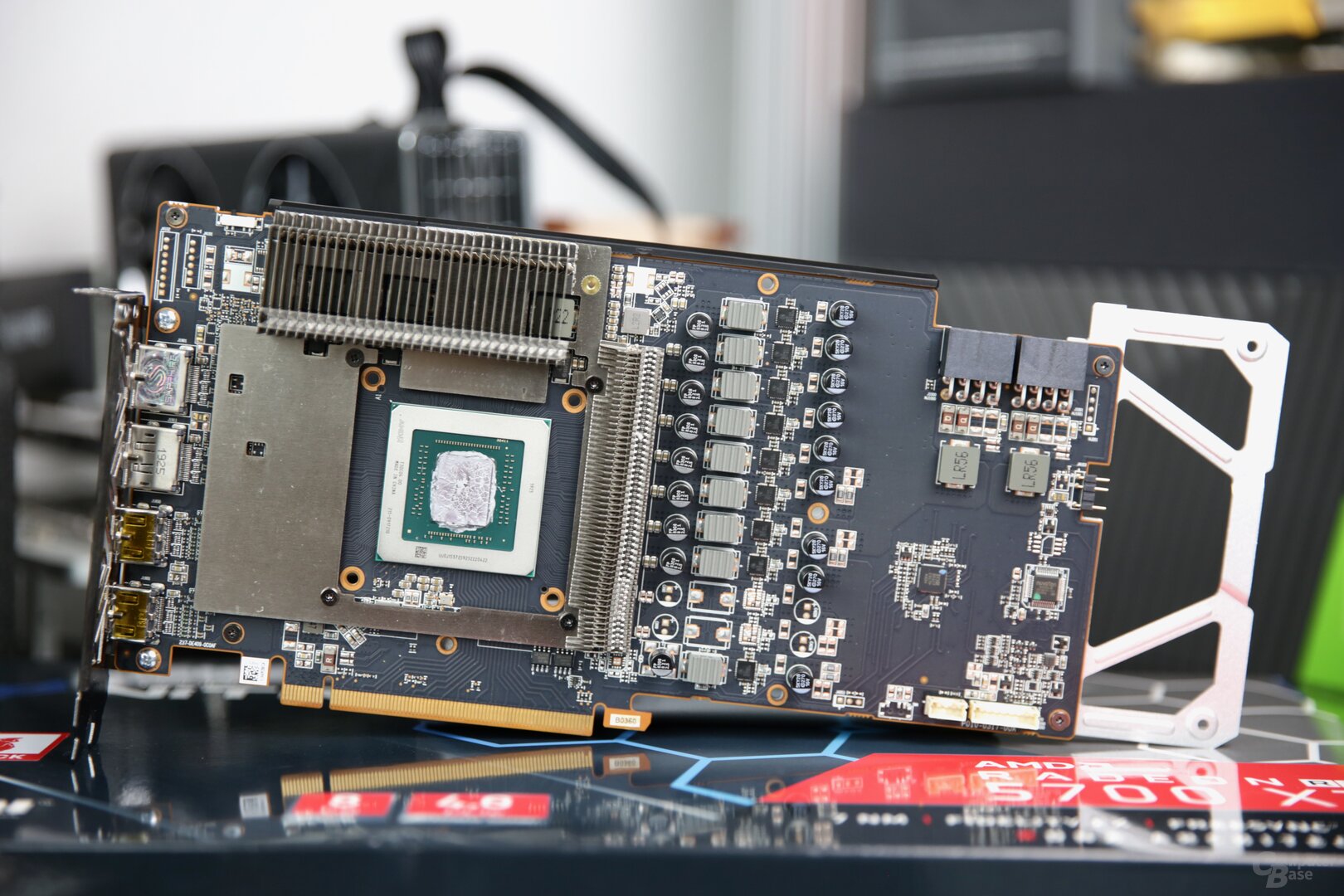

Three axial fans are responsible for the fresh air, with the middle one having a smaller diameter than the two outer models. The middle one comes to 85 mm, the two outer ones each to 95 mm. The latter have nine fairly flat blades, while the middle one has eleven, which are also steeper. The fans are switched off on the Windows desktop. They start at a GPU temperature of around 53 ° C and go out again at around 50 ° C.
RGB lighting with optional RGB fans
With the Radeon RX 5700 XT Nitro +, Sapphire is offering RGB lighting for the first time (even without limited edition), which can be seen on more or less the first try. The “Nitro Glow” light elements are attached to the card side and the back, so that they can be easily seen in the housing. Both the area and the quality know how to please. Sapphire does not use fancy effects, such as those used by Gigabyte in the Aorus series, but the quality can certainly keep up with the large models from Asus and Gigabyte. If you prefer a non-illuminated graphics card, you can switch off the RGB lighting using a tool.
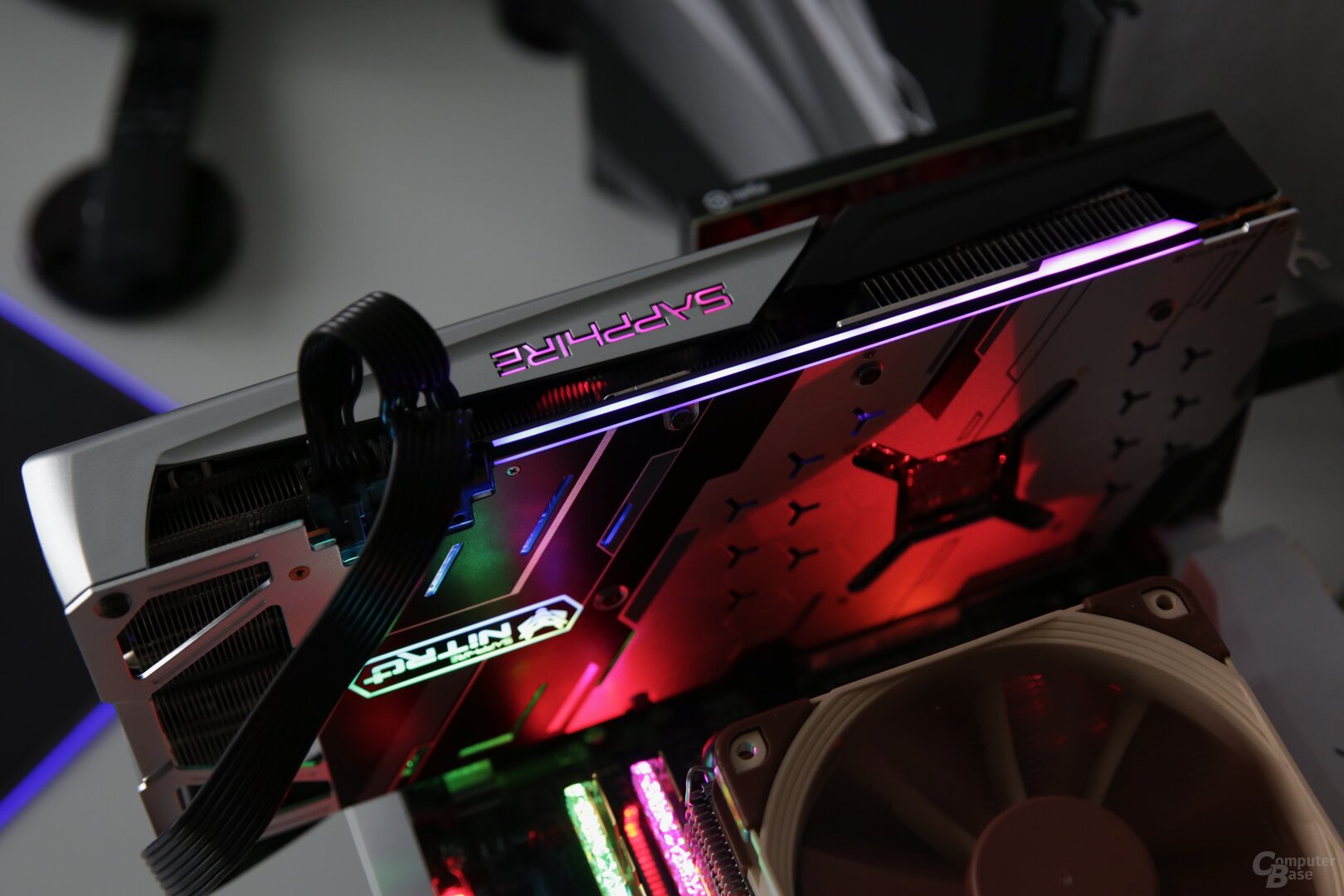
In addition, the RGB lighting of the graphics card can be connected to that of the mainboard, so that both components can light up synchronously. If that’s not enough, you can replace the built-in Nitro + fans with “ARGB fans” from Sapphire, who have to be purchased separately. Unlike the fans installed ex works, they are equipped with lighting elements. To replace or remove the fans, one screw must be loosened.
Three BIOS versions for faster, quieter or selection using a tool
If two BIOS versions are not enough, you just install three. This is the case on the Sapphire Radeon RX 5700 Nitro + – at least in theory. By default, a BIOS optimized for performance is activated, which offers a GPU power of 225 watts and is therefore one of the potentially fastest offshoots.
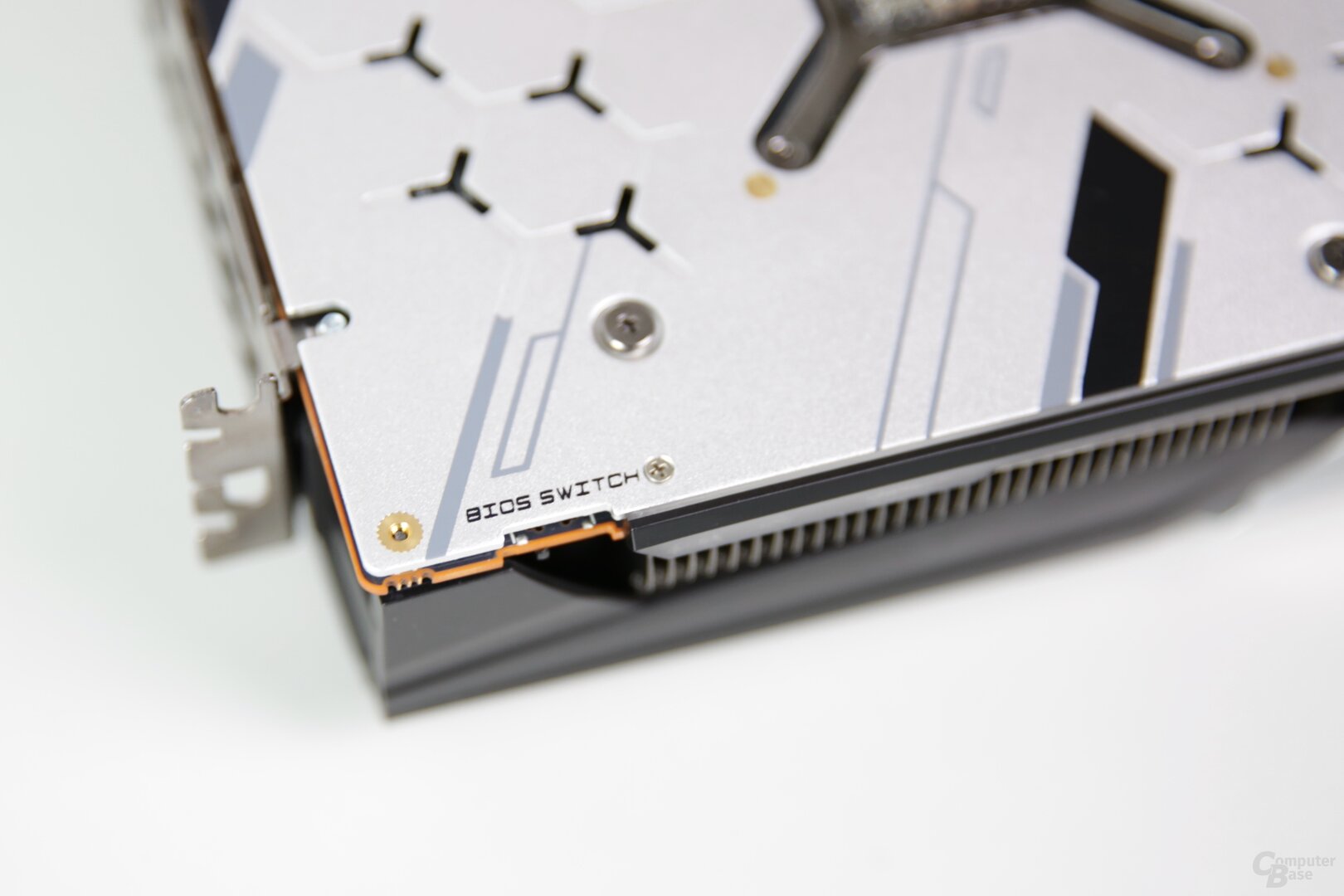
The second BIOS reduces the GPU power to 200 watts. This is still 15 watts more than in the reference design, but lets the fans turn lower than with the factory BIOS, making the graphics card quieter. And then there is the third BIOS, which is equipped with the parameters of the 225-watt BIOS as standard. However, in this case it is possible to switch between the two BIOS versions with Sapphire’s TriXX tool at the push of a button. All that is required is a restart, but the BIOS switch no longer has to be moved. In practice, there are only two different versions of the BIOS.
